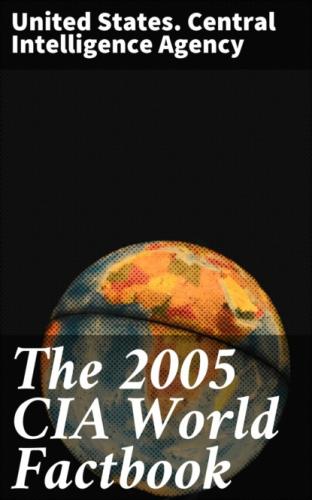Fiscal year:
21 March - 20 March
Communications Afghanistan
Telephones - main lines in use:
33,100 (2002)
Telephones - mobile cellular:
15,000 (2002)
Telephone system:
general assessment: very limited telephone and telegraph service
domestic: telephone service improving with the establishment of two
mobile phone operators by 2003; telephone main lines remain weak
with only 0.1 line per 10 people
international: country code - 93; five VSAT's installed in Kabul,
Herat, Mazar-e-Sharif, Kandahar, and Jalalabad provide international
and domestic voice and data connectivity
Radio broadcast stations:
AM 21, FM 23, shortwave 1 (broadcasts in Pashtu, Afghan Persian
(Dari), Urdu, and English) (2003)
Radios:
167,000 (1999)
Television broadcast stations: at least 10 (one government-run central television station in Kabul and regional stations in nine of the 32 provinces; the regional stations operate on a reduced schedule; also, in 1997, there was a station in Mazar-e Sharif reaching four northern Afghanistan provinces) (1998)
Televisions:
100,000 (1999)
Internet country code:
.af
Internet Service Providers (ISPs):
1 (2000)
Internet users:
1,000 (2002)
Communications - note:
in March 2003 'af' was established as Afghanistan's domain name;
Internet access is growing through Internet cafes as well as public
"telekiosks" in Kabul that are part of a nationwide network proposed
by the Transitional Authority for Internet access (2002)
Transportation Afghanistan
Highways: total: 21,000 km paved: 2,793 km unpaved: 18,207 km (1999 est.)
Waterways: 1,200 km note: chiefly Amu Darya, which handles vessels up to 500 DWT (2004)
Pipelines:
gas 387 km (2004)
Ports and harbors:
Kheyrabad, Shir Khan
Airports:
47 (2004 est.)
Airports - with paved runways: total: 10 over 3,047 m: 3 2,438 to 3,047 m: 4 1,524 to 2,437 m: 2 under 914 m: 1 (2004 est.)
Airports - with unpaved runways: total: 37 over 3,047 m: 1 2,438 to 3,047 m: 7 1,524 to 2,437 m: 14 914 to 1,523 m: 4 under 914 m: 11 (2004 est.)
Heliports: 5 (2004 est.)
Military Afghanistan
Military branches:
Afghan National Army (includes Afghan Air Force), Afghan Militia
Force (AMF) (2005)
Military service age and obligation:
22 years of age; inductees are contracted into service for a 4-year
term (2005)
Manpower available for military service:
males age 22–49: 4,952,812 (2005 est.)
Manpower fit for military service:
males age 22–49: 2,662,946 (2005 est.)
Manpower reaching military service age annually:
males: 275,362 (2005 est.)
Military expenditures - dollar figure:
$188.4 million (2004)
Military expenditures - percent of GDP:
2.6% (2004)
Transnational Issues Afghanistan
Disputes - international:
the UN has been able to repatriate over two million Afghan refugees
but several million more continue to reside in Iran and Pakistan in
camps and elsewhere, many at their own choosing; Coalition and
Pakistani forces continue to patrol remote tribal areas to control
the borders and stem organized terrorist and other illegal
cross-border activities; regular meetings between Pakistani and
Coalition allies aim to resolve periodic claims of boundary
encroachments; occasional conflicts over water-sharing arrangements
with Amu Darya and Helmand River states
Refugees and internally displaced persons:
IDPs: 167,000 - 200,000 (mostly Pashtuns and Kuchis displaced in
south and west due to drought and instability) (2004)
Illicit drugs:
world's largest producer of opium; cultivation of opium poppy
reached unprecedented level of 206,700 hectares in 2004; counterdrug
efforts largely unsuccessful; potential opium production of 4,950
metric tons; potential heroin production of 582 metric tons if all
opium was processed; source of hashish; many narcotics-processing
labs throughout the country; drug trade source of instability and
some antigovernment groups profit from the trade; 80–90% of the
heroin consumed in Europe comes from Afghan opium; vulnerable to
narcotics money laundering through informal financial networks
This page was last updated on 20 October, 2005
======================================================================
@Akrotiri
Introduction Akrotiri
Background:
By terms of the 1960 Treaty of Establishment that created the
independent Republic of Cyprus, the UK retained full sovereignty and
jurisdiction over two areas of almost 254 square kilometers in
total: Akrotiri and Dhekelia. The southernmost and smallest of these
is the Akrotiri Sovereign Base Area, which is also referred to as
the Western Sovereign Base Area.
Geography Akrotiri
Location:
peninsula on the southwest coast of Cyprus
Geographic coordinates:
34 37 N, 32 58 E
Map references:
Middle East
Area:
total: 123 sq km
note: includes a salt lake and wetlands
Area - comparative:
about 0.7 times the size of Washington, DC
Land boundaries: total: 47.4 km border countries: Cyprus 47.4 km
Coastline:
56.3 km
Climate:
